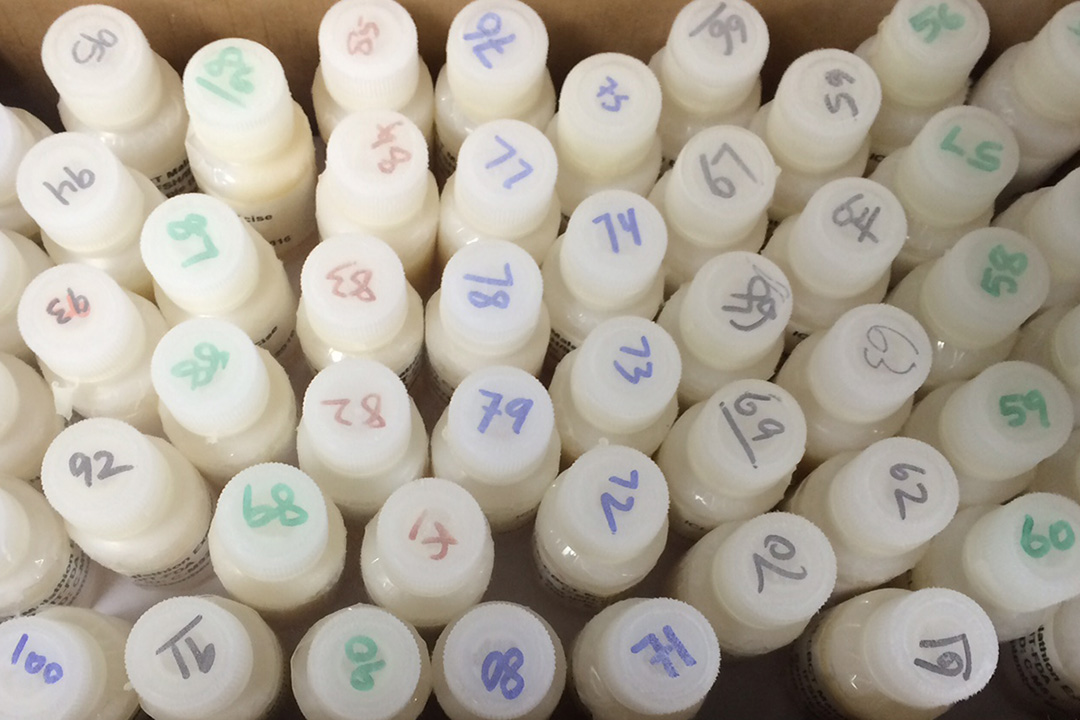// NEWS RELEASE
ECBC Participates in DHS-led Joint Exercise
Environmental Monitoring Lab exceeds exercise goal
CCDC Chemical Biological Center Public Affairs | February 6th, 2017
ECBC Participates in DHS-led Joint Exercise
Environmental Monitoring Lab exceeds exercise goal
DEVCOM CBC Public AffairsFebruary 6th, 2017

Water and milk samples laced with Malathion arrived to ECBC for testing at the Environmental Monitoring Laboratory as part of a joint exercise held in September 2016 with the Integrated Consortium of Laboratory Networks (ICLN), a network of federal emergency response laboratories through the Department of Homeland Security.
The ECBC Environmental Monitoring Laboratory (EML) participated in an exercise designed to simulate portions of a domestic response to potential Malathion contamination in milk and water. The objective of the exercise was to measure proficiency in the process of sample shipment, receipt, processing, analysis and reporting.
The joint exercise was conducted with the Integrated Consortium of Laboratory Networks, chaired by the Department of Homeland Security, which coordinates federally sponsored analytical laboratory services for chemical, biological, radiological, and nuclear incidents. It is made up of a total of nine federal agencies including the Department of Defense, Department of Agriculture, and Environmental Protection Agency.
Thanks to EML Chemist Nam-Phuong Nguyen, who managed the exercise for the lab, the EML successfully completed the receipt, analysis and reporting of 200 samples within three business days, well ahead of the reporting goal for the exercise.
“Phuong embraced the opportunity to participate and highlight our analytical method,” Schwarz said. “This exercise was voluntary. We volunteered to participate because of the importance of demonstrating our capabilities even at no cost. Successfully participating in exercises like this can potentially produce future funded work.”
In past experiences, these types of exercises have been primarily table-top simulation exercises as opposed to real-life testing and reporting. This was the first known exercise of its kind that emphasized actual laboratory demonstration of capability.
Spiked matrices (blinds) were prepared for participating laboratory networks, the Defense Laboratory Network (DLN), Food Emergency Response Network (FERN) and EPA Environmental Response Laboratory Network (ERLN). FERN labs tested the milk, the ERLN labs tested the water, and the DLN tested either based on the labs’ capabilities. However, the EML was the only participating laboratory to receive both substances for testing.
The EML previously developed and validated an analytical method for Malathion in various substances, such as powders, for the DHS. “This exercise was seen as not only an opportunity to evaluate our analytical method,” Schwarz said, “but also as an opportunity to highlight the laboratory’s readiness to support the nation in a time of crisis.”
The U.S. Army Combat Capabilities Development Command (DEVCOM) leads in the discovery, development and delivery of technology-based capabilities to enable Soldiers to win our nation’s wars and come home safely. DEVCOM is a major subordinate command of the U.S. Army Futures Command. The DEVCOM Chemical Biological Center is the Army’s principal research and development center for chemical and biological defense technology, engineering and field operations. The DEVCOM Chemical Biological Center is headquartered at Aberdeen Proving Ground, Maryland.
